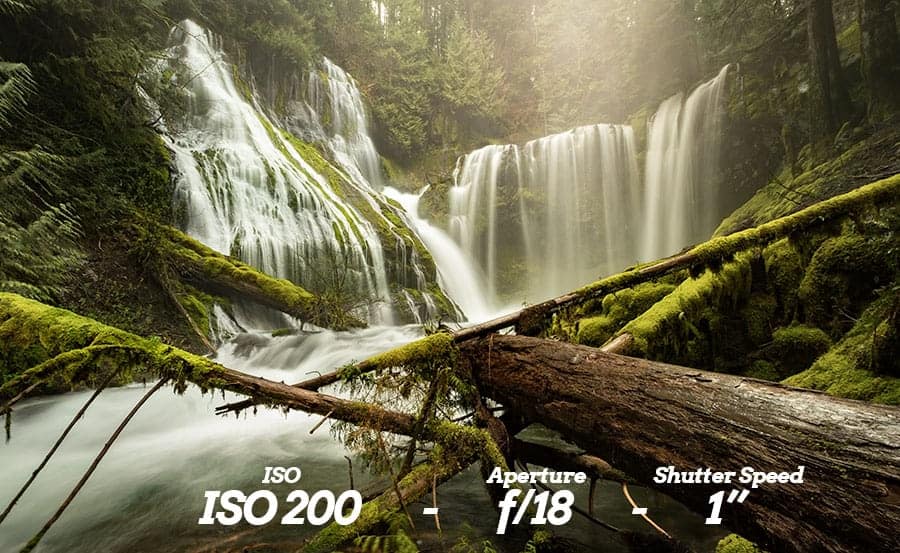
These examples are not rules though – photography is a creative practice, after all, and you can take some great photos by using aperture and f-stops in less common ways, such as shallow focus landscapes. Conversely, a small aperture is ideal for landscape photography to ensure the entire scene is in sharp focus. Simply put, you might want to use a large aperture in dark environments to maximize brightness or for an attractive shallow focus in portraits. In the example below, the photo on the left is taken using the maximum f/2.8 aperture for a shallow depth of field – a shallow focus – while the photo on the right minimum is f/11 and provides a large depth of field. It's easiest to understand the impact of aperture on depth of field by looking at comparison photos. Other qualities of the picture are affected by your choice of f-stop, namely the amount of your photo that will be in focus – in other words, depth of field. Using different f-stops (adjusting the aperture size) affects the amount of light entering the camera and therefore the brightness of the image.

This isn't true depth of field, though the effect can be brilliantly convincing. Instead of relying on a variable aperture to alter the amount of light and create aperture effects such as depth of field, phones artificially recreate effects like background blur.įor example, a smartphone's portrait mode artificially blurs the background for a shallow focus, mimicking the effect of a lens with a large aperture. (Image credit: Pexels / Torsten Dettlaff) The principle of a lens aperture is the same. An iris expands to let in more light so we can see more clearly in dark environments, and decreases in size when in bright light so we don't get blinded. Some lenses have a fixed aperture, including those in most smartphone cameras.Ĭonsider the human eye. On most lenses, the size of this diaphragm, which is formed by aperture blades (and seen as an almost circular hole), can be adjusted by the f-stop number. The 'aperture' is the opening in your camera lens, that lets light pass through to the camera.
PHOTOGRAPHY F STOP ISO
To maintain constant image brightness, while increasing or decreasing shutter speed, changes in ISO or f-stop must be made by the same number of stops in the opposite direction. F-stop vs aperture: what’s the difference? Remember, f-stop & ISO are staying constant for this example. This equation is the lens' focal length divided by the diameter of your effective aperture. It's a little complicated, but there is an equation comprising lens focal length and f-stop to work out the physical size of the aperture. However, the 'f' in f-stop actually stands for focal length. Therefore, the smaller the f-stop number, the larger the aperture. For example, f/4 is a quarter, making it larger than f/8 which is an 1/8th. A small aperture has a higher f-stop, whereas a large aperture has a small f-stop number. F-numbers are determined by the ratio of the diameter of the aperture to the focal length of a lens. Selecting a region changes the language and/or content on why the confusing use of symbols? This is because an f-stop indicates a fraction. The f-stop number, or f-number, is the setting that controls the size of the aperture and therefore how much light can pass through the camera lens. No matter what your goals in photography, a good understanding of aperture will improve the quality of every photo you take. Depth of field can be adjusted in post, and if you don’t quite achieve the bokeh you want, you can blur a background to pop your subject. And if further adjustments are needed in post-production, that’s where editing comes in. Whether you’re shooting on a Nikon, Canon, or any other brand of camera, a mastery of aperture settings - and their effect on your photos - will help you get great shots in different settings and at slower or faster shutter speeds. And program or auto mode will autoselect both for you. Shutter-priority mode, conversely, autoselects an aperture based on your chosen shutter speed. It can also be a good learning tool as, in editing, you can see the corresponding shutter speed your camera selected in certain conditions.

This can be helpful when you need to capture a bunch of fast shots in a consistently lit environment and you don’t have time to adjust your settings. In aperture-priority mode, the photographer selects the desired aperture and the camera autoselects an appropriate shutter speed.
PHOTOGRAPHY F STOP MANUAL
While you can always change the aperture with manual focus adjustments, aperture priority mode is an automated camera setting available on most modern cameras that can help you capture good photos.


 0 kommentar(er)
0 kommentar(er)
